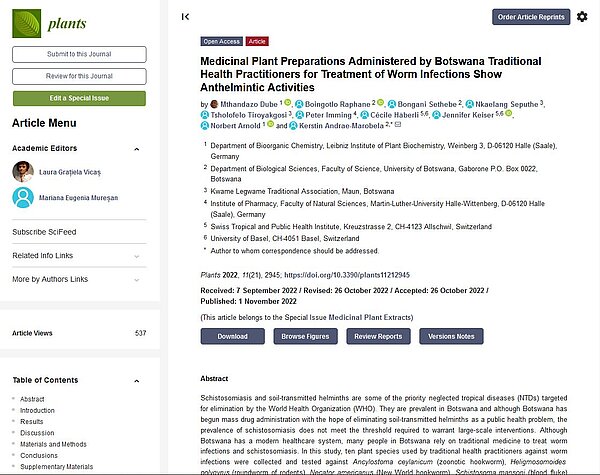Ask the medicine man! Investigation of traditional medicinal plants against worm diseases.
Illuminating ancient ways can sometimes pay off. IPB scientists in a team with partners from Botswana, Switzerland and MLU have examined medicinal plants from Botswana, which are traditionally used by local healers to fight schistosomiasis and other worm diseases. They investigated the activity of extracts of ten different plant species on a total of six different parasitic hookworms and roundworms. Extracts of two of the plant species tested, Laphangium luteoalbum and Commiphora pyaracanthoides, were found to be particularly effective against Schistosoma mansoni, the causative agent of intestinal bilharzia, even at low concentrations.
Schistosomiasis and other worm diseases affect more than 2.7 billion people in the poorest populations in Africa, Asia and Latin America. The neglected tropical diseases are also widespread in Botswana and are controlled here as elsewhere with the mass application of anthelmintics. Nevertheless, infestations of Schistosoma species have increased in recent years, and future epidemics of schistosomiasis cannot be ruled out. Prophylactic mass medication of the population is therefore insufficient as the only control measure, especially since the limited number of anthelmintics available and their prolonged use inevitably leads to resistance. Accordingly, there is a constant need for new drugs to combat worm infestations. Although Botswana has a modern health care system, many people with worm diseases turn to their traditional healers and, in general, traditional medicine in Africa is considered an important pillar of primary health care. A search for bioactives in medicinal plants that have been used for centuries may therefore be promising, as this publication proves. It is the first comprehensive characterization of the anthelmintic bioactivity of traditional medicinal plants of Botswana. The study took place within the framework of the German-African partner program Trisustain.



